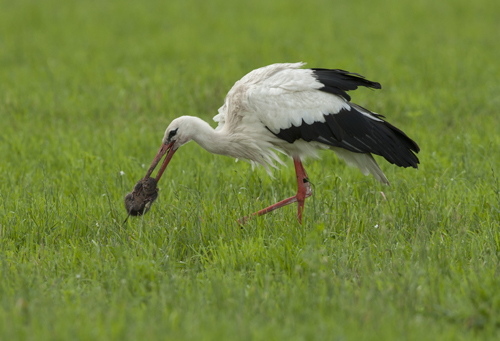White stork
- brings summer and sunshine
”He brings the summer, he brings the sunshine”. That is the song many Danish children used to sing at their school morning assemblies. And he, who brought the sunshine and the summer, was of course the stork.
Now the once regular summer visitor has almost disappeared as a Danish breeding bird. Only one stork pair has bred in Denmark in recent years. The key reason is the lack of food.
Eats frogs and lizards
The stork lives off frogs, lizards, mice and small fish that it finds in ponds, meadows and bogs. The stork is particularly fond of freshly-mown meadow where mice and small animals are easy to catch in the short, freshly-cut grass.
The stork is known for breeding on rooftops. In the old days, many people put wagon wheels on the roof as a platform for the nest.
The stork nests in many places in Schleswig Holstein. In the stork's city Bergenhusen, 50 km south of the Danish-German border, the roofs of 20 houses are used for housing a stork's nest.
A good year for storks
2012 was a very good year for storks, with a record number of wandering storks in Southern Jutland. So if the right conditions are present with soaking wet meadows with lots of frogs, the stork can once again take up its position on the farmhouse roof.
Facts about the white stork
Height 90-110 cm
Wingspan 183-217 cm
White plumage with black wing feathers. Beak and legs are bright red.
The stork used to be a common breeding bird in Denmark. It is now extremely rare with only 1-2 breeding pairs per year.


